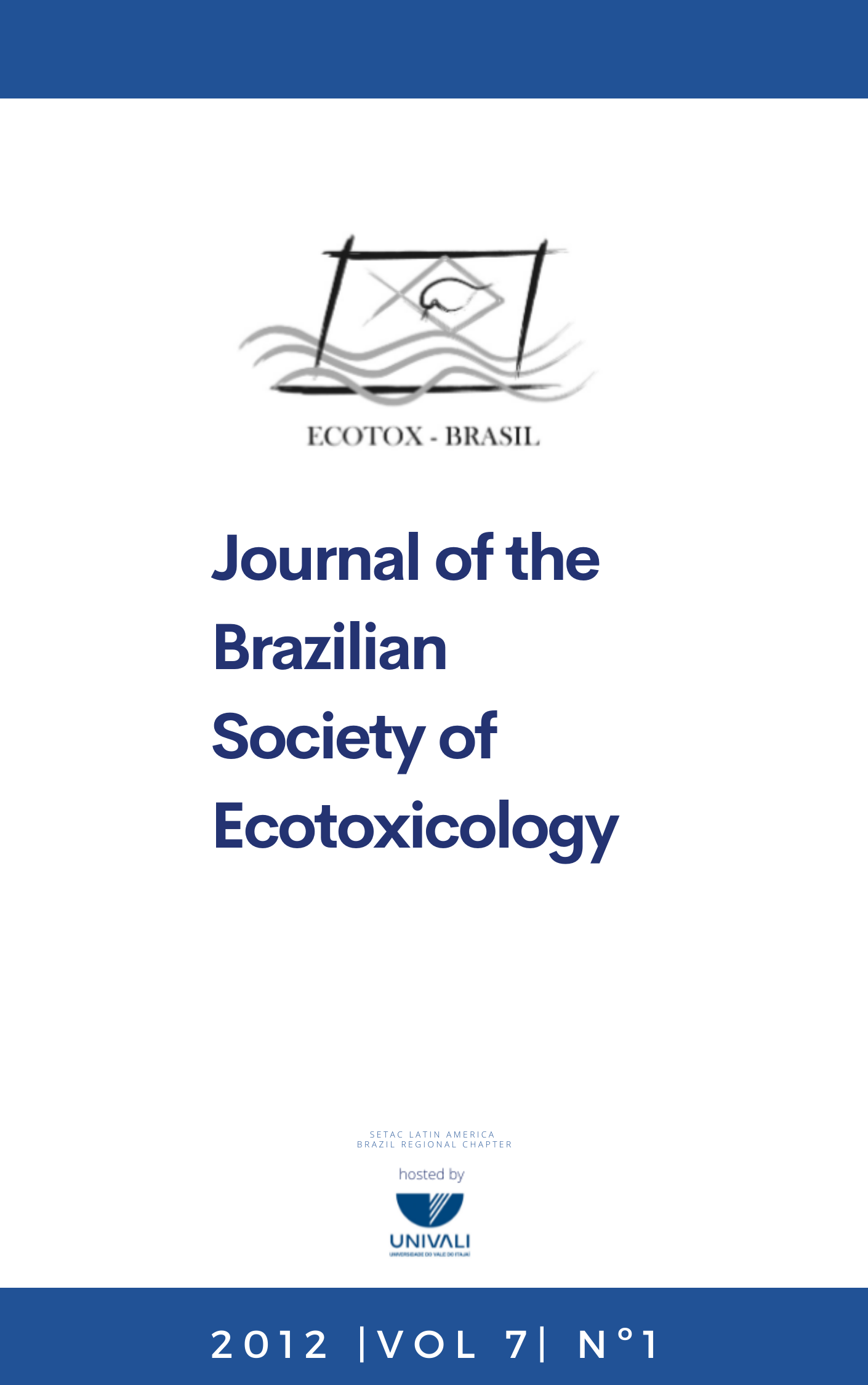Ecotoxicity of Sludges Generated by Textile Industries: a Review
Abstract
Textile industries consume a large amount of water and use toxic products in its processes. Consequently, they produce and release large volumes of effluents, which, treated, generate great amount of sludge. The final disposal of this sludge remains a challenge, and its ecotoxicological assessment is an important parameter to minimize its impacts. This article reviewed the ecotoxicological tests that have been employed to evaluate the hazard of such sludge. There are few papers in the literature on this issue, as well as a lack of consensus about sample preparation procedures and test organisms to be used. The test organisms most employed are higher plants, bacteria and aquatic organisms. Only one article used earthworms and one, mammals. Composting was efficient for reduction or elimination of the phytotoxicity of textile sludge. Both Daphnia magna and Vibrio fischeri showed adequate sensitivity for sludge acute toxicity evaluation. The endpoint genotoxicity using the Salmonella/ microsome assay seems to be important, because most of the obtained results were positive. More studies are needed to understand the applicability of algae, earthworms and mammals. Efforts are being made to establish a reliable battery of bioassays for ecotoxicological evaluation of such waste.
Key words: Textile sludge, bioassays, ecotoxicity, genotoxicity.
Downloads
Downloads
How to Cite
Issue
Section
License
Copyright © 2006 ECOTOX-Brasil
Copyright notice: It is a condition for publication that manuscripts submitted to this journal have not yet been published and will not be simultaneously submitted or published elsewhere. By submitting a manuscript, the authors agree that copyright for their article is transferred to the Sociedade Brasileira de Ecotoxicologia (ECOTOX-Brasil) if and when the article is accepted for publication. The copyright covers the exclusive rights to reproduce and distribute articles, including reprints, photographic reproductions or any other reproduction of a similar nature, including translations. No part of this publication may be reproduced, stored in a retrieval system or transmitted in any form or by any means, electronic, mechanical, photocopying, recording or otherwise, without permission of the publisher.
Notice: While every effort is made by the EEC, editors and editorial board to see that no inaccurate or misleading data, opinions or statements appear in this journal, they wish to make it clear that the contents of the articles and advertisements published herein are the sole responsibility of the contributors or advertisers concerned. Accordingly, the EEC, the editorial board and editors and their respective employees, officers and agents accept no responsibility or liability whatsoever for the consequences of any inaccurate or misleading data, opinion or statement.




